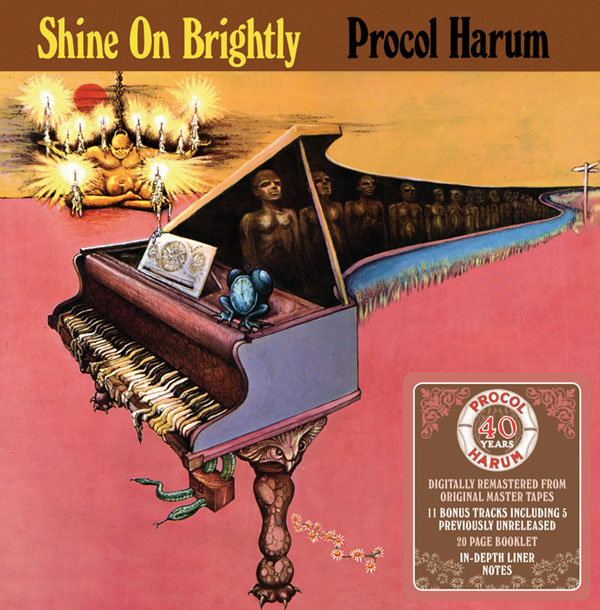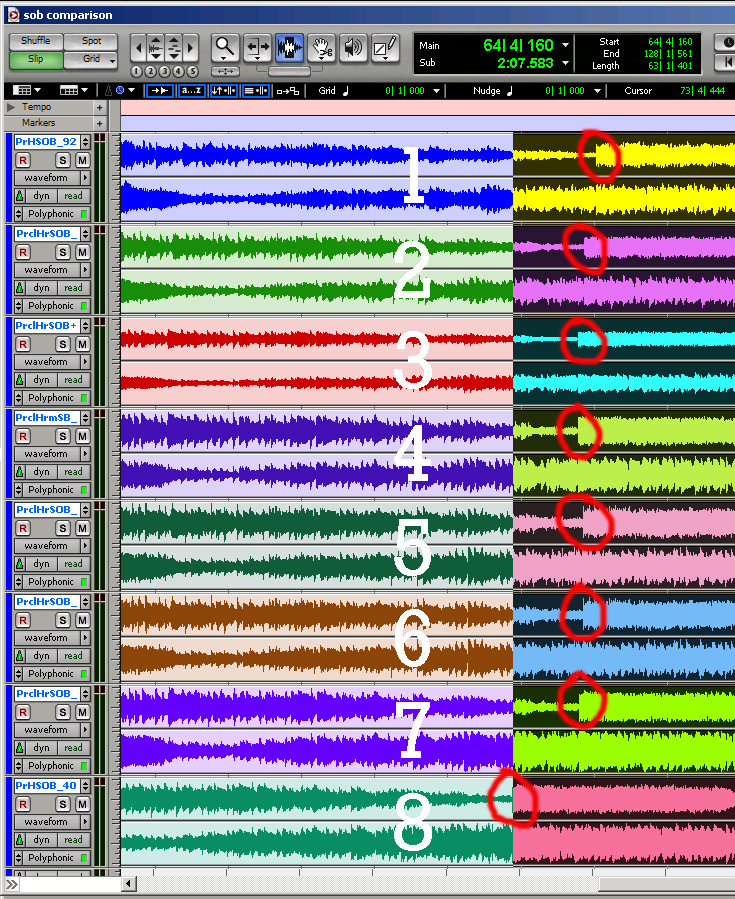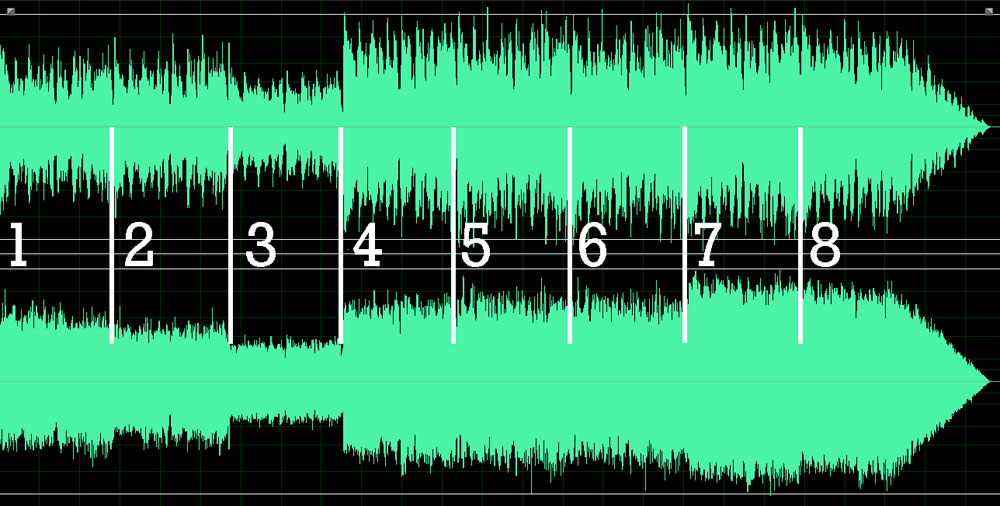Shine on Brightly
The Salvo reissue assessed, by the BtP team, for tape-speed
 The
moment you put on this excellent Salvo re-issue you're struck by the brightness
of the sound, which is 'digitally remastered from original master tapes'.
Several musical Procol fans have written to 'Beyond the Pale', however, to ask
whether the songs are running faster than we're accustomed to. For instance Ian
Hockley (a professional organist) wrote, "Have you noticed the remastered
Shine on Brightly is noticeably sharper in pitch than previous incarnations?
Interestingly the remastered Shine on Brightly on The Secrets of the
Hive is flatter than the identical track on the new version of the parent
album. It's very noticeable if you A/B them. Having an Anorak Day today!"
The
moment you put on this excellent Salvo re-issue you're struck by the brightness
of the sound, which is 'digitally remastered from original master tapes'.
Several musical Procol fans have written to 'Beyond the Pale', however, to ask
whether the songs are running faster than we're accustomed to. For instance Ian
Hockley (a professional organist) wrote, "Have you noticed the remastered
Shine on Brightly is noticeably sharper in pitch than previous incarnations?
Interestingly the remastered Shine on Brightly on The Secrets of the
Hive is flatter than the identical track on the new version of the parent
album. It's very noticeable if you A/B them. Having an Anorak Day today!"
Phil Cohen, a correspondent of Ronan Guha at Bucks Music,
declared in an American website review of the first Procol Salvo re-issue that
there are 'legitimate questions over tape speed/running time', though he
appeared to be trusting not his ears but a stop-watch, quoting
"A Christmas Camel 4:48 (4:54), Kaleidoscope 2:53 (2:57)"
etc where the timing of the Salvo reissue is compared with the parenthetical
duration of the corresponding Westside Procol Harum ... plus! track, from
the 1990s. Phil and Ian are, of course, not the authors of what follows:
Needless to say a stopwatch is not a reliable way of comparing the
running-speed of tracks that fade, like Kaleidoscope; even with a
finite-length track like A Christmas Camel the overall timing will depend
on one's reflexes, or, if a CD player is relied upon, on the length of the
lead-in, after the track-index, before the music starts.
 |
'Beyond the Pale'
thought it might be interesting to compare a few different releases more
carefully. We loaded eight CD versions of the song Shine on Brightly
into ProTools, and trimmed the silence from the fronts of the tracks
so that they all started at precisely the same time. In the horrible
ensuing din (click here for 256 kbps mp3),
phase effects caused by differing pitch and speed rapidly build up.
Listen how – despite starting exactly together – these eight tracks
diverge over the first few bars ('measures') until Gary Brooker's voice
makes a staggered entry. By the time Matthew Fisher's brilliant organ
solo is reaching its climax, the asynchrony is comically unbearable (click
here for 256 kbps mp3). A screenshot from ProTools (left) makes it
clear just how discrepant the speeds of these tracks are. Each coloured
lateral band represents the Shine on Brightly waveform (two
waveforms per track, as it's stereo), and time moves across from left to
right. The sources of the tracks are, in descending order,
1 Shine on Brightly, 1992, Castle Communications
2 The Early Years, 1992, Dojo Ltd
3 Homburg and other Hats, 1995, Castle Communications
4 Shine on Brightly ... plus!, 1998, Westside
5 Greatest Hits, 2000, Union Square Music
6 Classic Tracks and Rarities, 2002, Union Square Music
7 Secrets of the Hive, 2007, Salvo Records
8 Shine on Brightly, 2009, Salvo Records' 40th anthology
edition
The highlighted section, to the right of the diagram (it shows up dark) marks the moment when the guitar riff comes in after the organ
solo in the Salvo 2009 release, track 8. Red circles on each of the
other tracks show the sudden rise in volume as the
guitar sounds. The guitar re-entry on the 2009 Salvo release is a good four seconds ahead of
the others, and this is only about the middle of the song! By the end,
when Gary Brooker utters the third 'ha!' in the fade-out, track 8 is
seven seconds shorter than track 1. But track 8 is not the only
anomalous specimen: notice that, for instance, tracks one and two are
also running at different speeds.
Another point of interest is the amplitude of the waveforms: the
thicker the spiky line, the louder the music: compare, for example, the
volume of tracks 3 and 7: it's not just speed, but volume that vary ...
reflecting different decisions made in the mastering process, and,
perhaps, different generations of source material used in the process.
Regarding speed; in the 'old days' of analogue recording, speed and
pitch were related: if you varispeeded a track to make it shorter, by
running the tape through the machine faster, the pitch would become
higher by the same percentage increment. Nowadays, in the digital realm,
speed and pitch can be controlled independently. So how do these tracks
compare in pitch? Click here (256 kbps
mp3).to compare the eight tracks, the opening two bars of each
version unrelentingly concatenated as shown in the diagram below.
 Variations in 'depth' of sound are very audible – in general, as
we progress through time the clarity and definition of the music
increases – but variations in pitch are clear also even to the
untrained ear. The last section, the 2009 Salvo reissue, sounds so much
sharper than the rest it's almost like a key-change.
The second diagram,
right, shows what you're listening to when
you click here. Of course, you're listening to an mp3, which
compresses the music quality, so BtP doesn't suggest you're hearing how
good the Salvo re-mastering really is. But you can hear the
relative quality of the eight versions as this clip
plays. [We're mindful of the e-pundit who proclaimed that Secrets of the Hive didn't sound
any better than previous re-issues, the evidence apparently being a torrent download,
its sound compressed and compromised. If you want to
hear and judge these re-releases properly, you absolutely need to hear
the actual CDs]. Variations in 'depth' of sound are very audible – in general, as
we progress through time the clarity and definition of the music
increases – but variations in pitch are clear also even to the
untrained ear. The last section, the 2009 Salvo reissue, sounds so much
sharper than the rest it's almost like a key-change.
The second diagram,
right, shows what you're listening to when
you click here. Of course, you're listening to an mp3, which
compresses the music quality, so BtP doesn't suggest you're hearing how
good the Salvo re-mastering really is. But you can hear the
relative quality of the eight versions as this clip
plays. [We're mindful of the e-pundit who proclaimed that Secrets of the Hive didn't sound
any better than previous re-issues, the evidence apparently being a torrent download,
its sound compressed and compromised. If you want to
hear and judge these re-releases properly, you absolutely need to hear
the actual CDs]. So the 2009 Salvo re-release sounds heaps better than the
rest, but it's apparently running both sharp and fast. The fact that
it's not merely fast, or merely sharp, suggests that this
discrepancy originates at the analogue stage, not in subsequent digital
manipulation – when pitch and speed could have been adjusted
independently. In short, the 2009 re-issue must have been based on a
tape running faster than the rest.
So which is right? The current reissue might be correct, and all the
others to varying degrees flat in pitch. BtP spoke to the very
helpful Chas Chandler and Salvo Records, who said that the 2009 reissue
was the first one to be remastered from the original tapes (which might
explain why it's not at the same pitch/speed as 2007's Secrets of the
Hive version, which originates from the same company. Chas was aware
of the perceived discrepancy and quoted remastering expert Rob Keyloch
as commenting that Sixties' cutting engineers were wont to adjust
the speed of a track to get it sounding the way they wanted it ... which
BtP feels sure can't have been popular with the artists! So on the basis
of Chas's remarks, we might conclude that Salvo have at last got the
pitch right, and everyone before has been adrift.
But
finally ... from looking over Gary Brooker's shoulder, live and on film,
one knows that Shine on Brightly begins on a B
flat chord, the right-hand (and the guitar) hammering out an F note. The
recorded track is somewhat too 'busy' to give a very accurate reading in Adobe
Audition's 'Frequency Analysis' window, but simply playing along on a
guitar requires one to tune the string at least a quarter-tone up,
approaching F#. So
unless Procol originally recorded the song on a highly-strung piano, and
somehow got a Hammond organ to run at a correspondingly high pitch, the balance of
evidence seems to suggest that, for whatever reason, the Salvo 2009 disc
represents a tape that was running fast.
Does this compromise listening enjoyment? It does not:
the remastering is so exciting in other ways, full of detail and
nuance, that the disc is indispensable. It will doubtless remain one more of
those minor mysteries that afflict the story of Procol Harum.
Phil Cohen adds:
Because Fly's mastering studio was (presumably) playing all of these master tapes
on the same tape deck ... and there seems to be no speed error on any of the
bonus tracks, it would seem that the original 2-track tape deck that the
Shine on Brightly album was mixed to was running slow, resulting in
fast/sharp playback when the tapes were played on other decks. My guess is that,
(in the 1960s) this was corrected in the mastering stage during the making of
copy tapes, but that no one made any note on the original master tape boxes of
the need to correct the speed, because it was assumed that all releases would be
taken from pitch-corrected safety copies.
Missing a bell? Read this article
|
 The
moment you put on this excellent Salvo re-issue you're struck by the brightness
of the sound, which is 'digitally remastered from original master tapes'.
Several musical Procol fans have written to 'Beyond the Pale', however, to ask
whether the songs are running faster than we're accustomed to. For instance Ian
Hockley (a professional organist) wrote, "Have you noticed the remastered
Shine on Brightly is noticeably sharper in pitch than previous incarnations?
Interestingly the remastered Shine on Brightly on The Secrets of the
Hive is flatter than the identical track on the new version of the parent
album. It's very noticeable if you A/B them. Having an Anorak Day today!"
The
moment you put on this excellent Salvo re-issue you're struck by the brightness
of the sound, which is 'digitally remastered from original master tapes'.
Several musical Procol fans have written to 'Beyond the Pale', however, to ask
whether the songs are running faster than we're accustomed to. For instance Ian
Hockley (a professional organist) wrote, "Have you noticed the remastered
Shine on Brightly is noticeably sharper in pitch than previous incarnations?
Interestingly the remastered Shine on Brightly on The Secrets of the
Hive is flatter than the identical track on the new version of the parent
album. It's very noticeable if you A/B them. Having an Anorak Day today!" 
 Variations in 'depth' of sound are very audible – in general, as
we progress through time the clarity and definition of the music
increases – but variations in pitch are clear also even to the
untrained ear. The last section, the 2009 Salvo reissue, sounds so much
sharper than the rest it's almost like a key-change.
The second diagram,
right, shows what you're listening to
Variations in 'depth' of sound are very audible – in general, as
we progress through time the clarity and definition of the music
increases – but variations in pitch are clear also even to the
untrained ear. The last section, the 2009 Salvo reissue, sounds so much
sharper than the rest it's almost like a key-change.
The second diagram,
right, shows what you're listening to